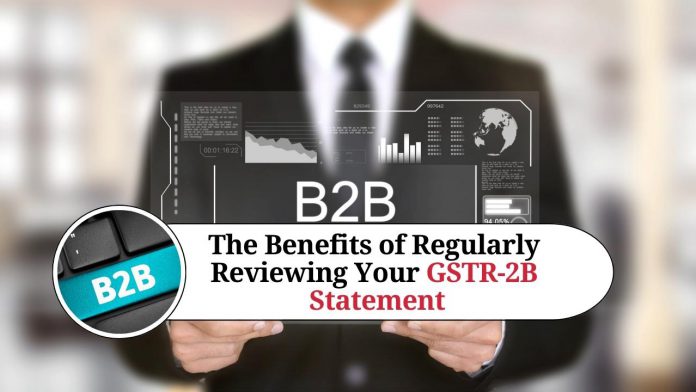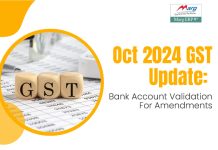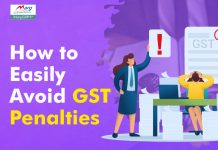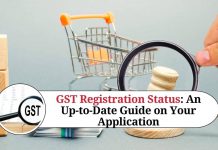Introduction to GSTR-2B
GSTR-2B is an auto-drafted input tax credit (ITC) statement under the Goods and Services Tax (GST) regime in India. It provides taxpayers with a summary of the available ITC available in their electronic credit ledger. The purpose of GSTR-2B is to simplify the process of claiming ITC and to reduce the risk of fraudulent claims.
Importance and benefits of GSTR-2B
GSTR-2B is an important tool for taxpayers to track and manage their ITC. By providing a summary of the available ITC, it helps taxpayers to ensure that they are not missing out on any ITC that they are eligible for. Additionally, GSTR-2B makes it easier for taxpayers to reconcile their ITC with their purchases, reducing the risk of errors and fraud.
When was GSTR-2B made available?
GSTR-2B was made available from April 1, 2019, for taxpayers registered under the GST regime in India.
How to access GSTR-2B on the GST portal?
To access GSTR-2B, taxpayers need to log in to the GST portal using their login credentials. Once logged in, they can access GSTR-2B under the “Returns” section. From there, they can view and download their GSTR-2B statement in PDF format.
Contents and features of GSTR-2B
The GSTR-2B statement provides taxpayers with the following information:
- Total ITC available in the electronic credit ledger
- Breakup of ITC by type (e.g., ITC under CGST, SGST, IGST, and CESS)
- Details of purchases for which ITC has been claimed
- Details of ITC that has been reversed or lapsed
- The detailed format of GSTR-2B
The GSTR-2B statement is divided into several sections, including:
- Part A: Summary of ITC available
- Part B: Details of ITC claimed in GSTR-3B
- Part C: Details of ITC reversed or lapsed
- Part D: Details of ITC lapsed due to non-filing of returns
- In Part A, the summary of ITC available, taxpayers can view the total ITC available in their electronic credit ledger, along with the breakup of ITC by type (e.g., ITC under CGST, SGST, IGST, and CESS).
In Part B, the details of ITC claimed in GSTR-3B, taxpayers can view the details of purchases for which ITC has been claimed, including the GSTIN of the supplier, invoice number, and date.
In Part C, the details of ITC reversed or lapsed, taxpayers can view the details of ITC that has been reversed or lapsed, including the reason for the reversal or lapsing of ITC.
In Part D, the details of ITC lapsed due to non-filing of returns, taxpayers can view the details of ITC that has lapsed due to the non-filing of returns, including the GSTIN of the supplier and the period for which the return was not filed.
In addition to the benefits mentioned above, GSTR-2B also helps to promote transparency and accountability in the GST system. It allows taxpayers to track their ITC claims and monitor the accuracy of the information submitted by their suppliers. This can help to reduce the risk of errors and fraud and promote a more efficient and effective GST system.
Another advantage of GSTR-2B is that it makes it easier for taxpayers to track their ITC claims over time. By having a clear and concise summary of their ITC claims, taxpayers can make more informed decisions about their GST compliance and identify any potential issues early on. This can help to minimize the risk of penalties and other legal repercussions for non-compliance.
It is important for taxpayers to ensure that their GSTR-2B statement is accurate and up-to-date. To do this, they need to regularly reconcile their ITC claims with their purchases and ensure that the information submitted by their suppliers is accurate and complete. This includes checking the details of the invoices, such as the invoice number, date, and GSTIN of the supplier, and verifying that the ITC claimed is in line with the eligible credits.
Taxpayers also need to be aware of the deadlines for filing their GSTR-2B statement. The deadline for filing GSTR-2B is the 20th of each month, and taxpayers need to ensure that their statement is filed on time to avoid any late fees or penalties. In addition, taxpayers need to be aware of the due dates for the different types of returns under the GST regime, including GSTR-1, GSTR-3B, and GSTR-9, and ensure that they are filed on time.
To ensure that they are in compliance with the GST regulations, taxpayers need to be familiar with the different types of returns that are required under the GST regime, as well as the information that needs to be included in each return. This includes understanding the different types of ITC that are eligible, such as ITC under CGST, SGST, IGST, and CESS, and the conditions under which ITC can be claimed.
In addition, taxpayers need to be aware of the different types of ITC reversals and lapses that can occur and the reasons for these reversals and lapses. This includes understanding the consequences of failing to file returns on time, as well as the consequences of claiming ITC fraudulently.
Conclusion
GSTR-2B is a valuable tool for taxpayers in India to effectively manage their ITC and ensure that they are in compliance with the GST regulations. By understanding the contents and features of GSTR-2B, taxpayers can make the most of their eligible credits, minimize the risk of errors and fraud, and promote a more efficient and effective GST system. Taxpayers need to regularly reconcile their ITC claims with their purchases and ensure that their GSTR-2B statement is accurate and up-to-date to ensure that they are in compliance with the GST regulations. GSTR-2B is an important tool for taxpayers to manage and track their ITC under the GST regime in India. By providing a summary of the available ITC, it helps taxpayers to ensure that they are not missing out on any ITC that they are eligible for, while also reducing the risk of fraudulent claims. Taxpayers can access their GSTR-2B statement on the GST portal




















